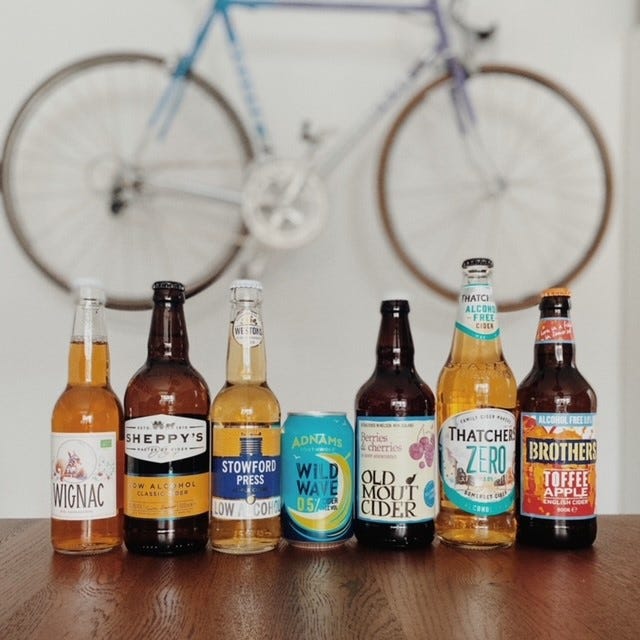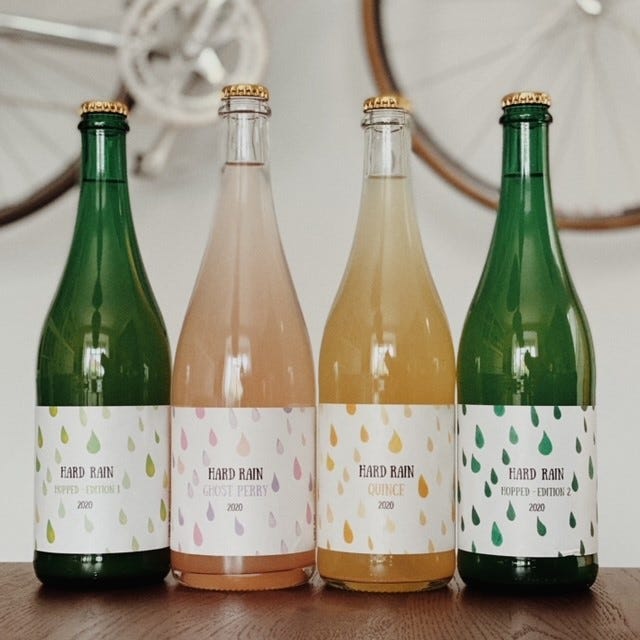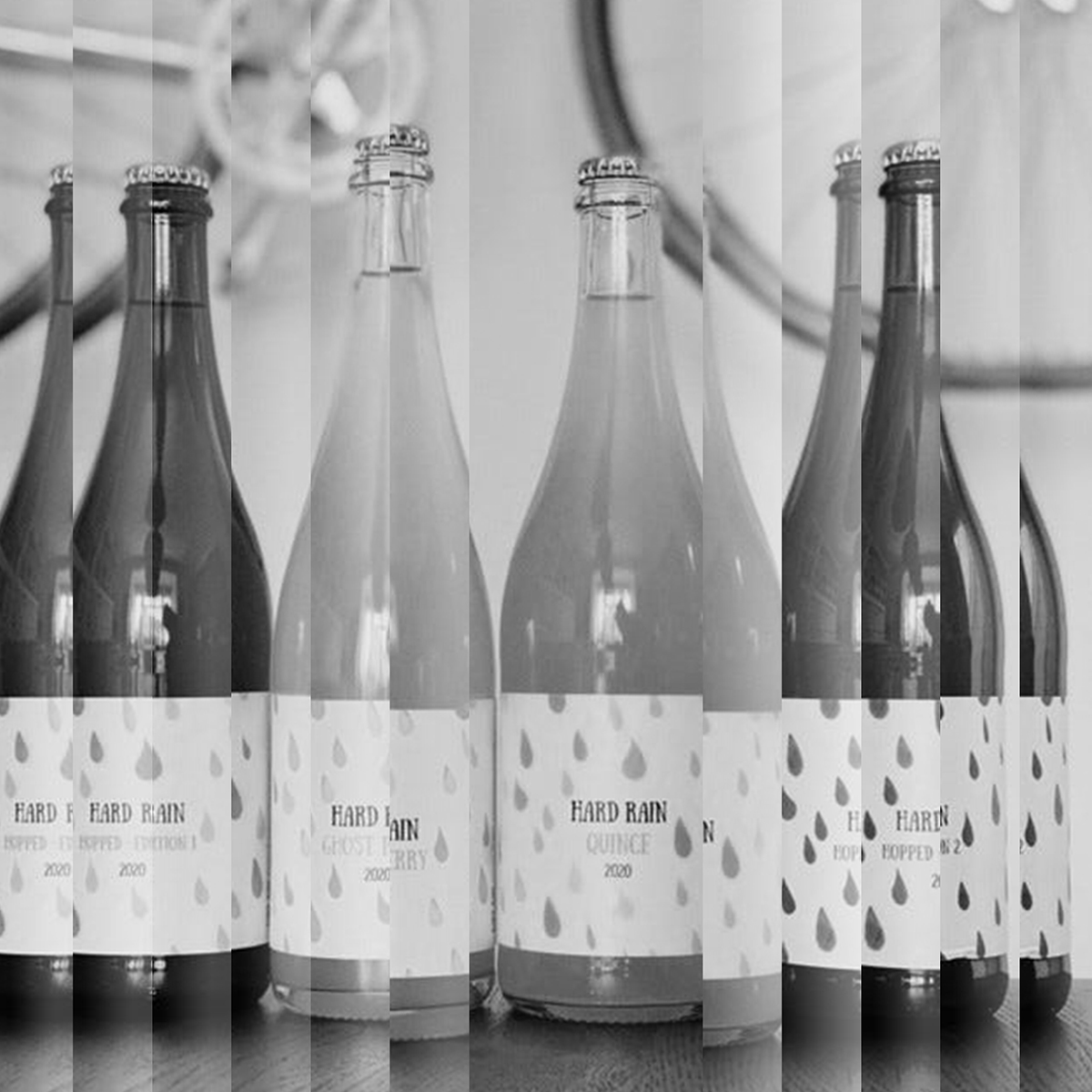Part 1: Modern low alcohol ciders and traditional ciderkins
This week, my love for fermented apple juice takes me down the low and no alcohol cider route, and I’m taking the scenic path past contemporary examples and cider heritage!
Low and no alcohol drinks are no longer the stuff of sober warm lager nightmares. You can find #nolow beers, ciders, wines and spirts now in your local supermarket. Bottle shops have dedicated sections and breweries like Big Drop Brewing Co. and Drop Bear Beer Co. are committed to brewing beers with ABV’s of 0.5% and under.
And cider? Isn’t non-alcoholic cider just apple juice? Say what?!
That is, and should, certainly not (be) true! Cider is fermented apple juice, so non-alcoholic cider must still be fermented juice, however minus the alcohol…
But how is no and low cider made?
Well, if our friends, the yeast are involved, we tend to get alcohol, so how is it done?
Sugar + Yeast = Ethanol and CO2

Let’s look at the craft beer scene for a moment: here, no and low beers are either produced by removing the alcohol post fermentation through the help of technology, or by using yeast strains which naturally produce lower alcohol levels. Lallemand Brewing, for example, are actively researching such strains and other low-alcohol options for the brewing industry.[1]
Apart from dealcoholisation, low and no alcohol beer can also be made using a method referred to as limited fermentation. Here, the brewer offers the yeast less fermentable sugars in the wort, which results in less alcohol. Grains like rice or maize contain less sugar to begin with, so they are ideally suited. Extracting sugars during the mashing process is another possibility.
However, cider is not beer, and cider is not brewed like beer. Cider is the result of a liquid which is naturally full of sugars. Cider makers don’t need to coax said sugar out of grains to create alcohol – their raw ingredient comes already full of it.
You may recall, cider makers can control the strength and consistency of their ciders by blending them, either with other batches of cider, juice or water.
Therefore, a cider which is particularly high-octane due to the sugars naturally present in the apples, can be blended with another cider naturally low in alcohol to create a cider with a lower, but more sessionable alcohol content (a combination of the two if you will).
So dilution becomes our friend in creating no and low alcohol ciders. But how far can we dilute and blend before we lose the specific cider characteristics? After all, we[2] don’t buy a low alcohol cider because we want to drink apple juice. We want a liquid which tastes like cider, which tastes like fermented apples, a liquid which has undergone an additional process other than being the result of milling and pressing.
Therefore, to answer the question of how #nolow cider is made:
we either remove the alcohol through reverse osmosis for example, we dilute the percentage of alcohol in the liquid, or we stop the fermentation process.
Seems all rather modern[3] compared to the more traditional approach of crafting ciderkin (and perrykin[4]).

Ciderkin is the result of wetting pomace, and repressing it. So, basically after the cider maker has pressed out all the juicy goodness from the milled apples, they soak the pomace in water and press again, resulting in a far less sugary juice, than [JS1] the first pressing would have generated.
Less sugar in the main raw ingredient means less food for our friend yeast, which in turn means less alcohol overall being created. Historically, this low in alcohol liquid was often consumed by children or given to farm workers.
Sweet!
However, ciderkin is not always low in alcohol and can pack quite a punch! So if you’re after a thirst quenching #nolow cider, please check the label!
Ciderkin is a very traditional drink and not many makers produce it these days, however Little Pomona still do – enter the Hard Rain series[5]!
I’ve managed to get my paws on five different ciderkins, however as two of them present an ABV of 4% and higher, I feel like they don’t really belong here for the time being[6].
I will, of course, cover them at a later stage, but for now, meet:
· Little Pomona Hard Rain Ghost Perry (2.9% ABV)
· Little Pomona Hard Rain Quince (3.8% ABV)
· Little Pomona Hard Rain Hopped 2020 Edition 1 (3.8% ABV)
Praise the cider gods!
But how do low and no alcohol ciders compare taste wise to their alcoholic counterparts?
Well, as our perceptions of taste, aroma and flavour are unique and individual, the easiest way to answer this is to go out and try as many as possible[7].
My plan therefore is to get my paws on a few low and no alcohol ciders and ciderkins, pour a few flights and enjoy the offerings.
My shopping / wish / drinks list[8]:
Thatchers Zero Alcohol Free Cider (0.0% ABV)
Westons Stowford Press Low Alcohol (<0.5%ABV)
Adnams Wild Wave Low Alcohol Cider (0.5% ABV)
Champions Vitamin Cider Raspberry Flavoured (0.5% ABV)
Kopparberg Strawberry & Lime Non Alcoholic (0.05% ABV)
Kopparberg Mixed Fruits Non Alcoholic (0.05%ABV)
Kopparberg Alcohol-Free Pear Cider (0.05% ABV)
Crafty Nectar x Wise Bartender Cider (0.5%ABV)
PULP Apple Alcohol Free Cider (0.5%ABV)
Sheppy’s Low Alcohol Classic Cider (0.5% ABV)
Holly GoLightly Low Alcohol Cider Bottle (0.5% ABV)
Drynks Unlimted Smashed Cider (0% ABV)
Drynks Unlimited Smashed Berry (0% ABV)
As you can see, all of these are low in alcohol, with the highest ABV being 0.5%[9]. In the UK, a cider (and beer) is classed as low alcohol if it has less than 1.2% ABV, with a drink containing no more than 0.05% being considered no-alcohol or alcohol-free. Alcoholic drinks with less than their typical ABV are often referred to as reduced alcoholic drinks, so this is where I would place the three ciderkins.
· Little Pomona Hard Rain Ghost Perry (2.9% ABV)
· Little Pomona Hard Rain Quince (3.8% ABV)
· Little Pomona Hard Rain Hopped 2020 Edition 1 (3.8% ABV)
Certainly not short of options here!
To be able to fully enjoy all ciders, I’m dividing them into sessions to avoid palate fatigue:
The Apple Flight #1[10]
· Thatchers, Zero Alcohol Free Cider
· Westons, Stowford Press Low Alcohol
· Brothers, Toffee Apple Alcohol Free Cider
· Adnams, Wild Wave Low Alcohol Cider
· Drynks, Smashed Cider
The Apple Flight #2
· Crafty Nectar x Wise Bartender, Cider
· PULP, Apple Alcohol Free Cider
· Sheppy’s, Low Alcohol Classic Cider
· Wignac, La Lady Squirrel Alcohol Free Cider
· Holly GoLightly, Low Alcohol Cider Bottle
The Fruity Session
· Champions, Vitamin Cider Raspberry Flavoured
· Old Mout, Berries & Cherries Alcohol Free Cider
· Drynks, Smashed Berry Fruit Cider
The Swedish Flight
· Kopparberg, Mixed Fruits Tropical Non Alcoholic
· Kopparberg, Mixed Fruits Non Alcoholic
· Kopparberg, Strawberry & Lime Cider
· Kopparberg, Alcohol-Free Pear Cider
The Ciderkins Session
· Little Pomona Hard Rain Ghost Perry
· Little Pomona Hard Rain Quince
· Little Pomona Hard Rain Hopped 2020 Edition 1
If you are a bit like me, you’d love a beer or cider flight every now and then. By nature, they will allow you to sample various drinks in small quantities and can have 1/2 pints, 1/3 or taster flight glasses. They are fun, great for sharing and allow you to explore the drinks on offer.
If I order a beer flight, I usually try to stick to the “light-to-dark-drinking” template, not only because that’s how I like to drink, but also because I (usually) prefer my Pilsners cold and my stouts slightly warmer. If I’m drinking ciders I either go from still to sparkling or dry to sweet.
Nonetheless, my proposed flights here follow a different approach:
In short, the apple sessions contain ciders which follow the more traditional route of cider = fermented apple juice, and flavoured session, well, flavoured ciders and a pear cider.
Ok, fair enough, the pear cider really belongs in a session of its own kind, along with other Perries and pear ciders. We could have also called the group The Swedish Flight, but then the Champions, Drynks, and Old Mout would have been the odd ones out. So maybe we go with The Fruity (mostly) Swedish Flight…
Let’s just all agree that the titles aren’t that important after all, and move all Swedish ciders into their own session and keep the fruity ciders where they are. Moving on.
And if you’re still reading and have paid attention, the final flight contains three ciderkins, well two ciderkins and 1 perrykin, but we’re splitting hairs here now.
For reference, the American Cider Association (ACA), classes a pear cider a fruit cider. I am not talking about a Perry here! A Perry is still a Perry if it is made with 100% fermented pear juice. Rather, following this classification system, a pear cider is a cider made from fermented apple juice with the addition of perry juice, concentrate or extracts. Other examples of fruit cider, according to the ACA would be ciders which are the result of a combination of any class of apples and at least one other fruit in the form of whole fruit, juice, or fruit extracts or concentrates. Hello strawberry & lime cider, how you doin’?
In the UK, we tend to group ciders into families: Tannic, Acid, Flavoured, Ice and Low & No. Bearing in mind that low and no alcohol ciders can also be flavoured tannic or acidic in nature, you get the idea.
The Beer & Cider Academy in London, classes flavoured cider as a cider which is made with apples (tannic and/or acidic) and at least one additional ingredient, typically fruits, but also herbs, spices, and/or flowers for example. Send those hopped ciders my way please for research purposes (of course!)
So, back to my 4 proposed flights! At the time of writing, I’ve only had 2 out of the 19 ciders[11], namely the Sheppy’s and the Crafty Nectar x Wise Bartender collaboration.
Needless to say I’m really looking forward to exploring the other 15, especially as I haven’t had their alcoholic versions yet (if they indeed have one)! Having said that, I don’t believe that any no or low alcohol versions are worse or indeed better than the alcoholic drinks. They are simply different, and all add to the diverse market – a cider for every occasion and everyone. The bonus is, that if you don’t like a cider, or don’t agree with a specific production method, you don’t have to drink it[12].
Ain’t that just dandy?
I’ll let you all know what I thought of the various ciders[13] in due course, and with a bit of luck, I might even recruit @Chimp.Rocket to help in this noble quest![14]
And on that note, pour yourself a cider and enjoy life!
Wassail
xx
[1] https://www.lallemandbrewing.com/en/united-kingdom/blog/solutions-for-the-future-of-low-alcohol-beer-by-a-patterson/ [Accessed 01/11/2021]
[2] Well, me that is. I should not generalise. After all taste is subjective! Here, we=me. Apologies for that oversight
[3] I am using modern as in “relating to the present or recent times as opposed to the remote past”. I fully understand that this is a very simplistic approach, but bear with me here (or indeed invite me for a drink and we can have a chat!)
[4] I shall use ciderkin to mean both drinks from now on
[5] As Little Pomona is very much a harvest driven cider maker (and boy do they do it well!!), once their ciders have sold out, they have sold out. This is why I haven’t included a link with the individual ciders. However, using a search engine of your choice, or speaking to a bottle shop should allow you to get your hands on those little beauties if you can’t find them on their website anymore.
[6] Granted 3.8% is just above the generally accepted 3.5% of low/ reduced alcohol ciders, but I wanted to include at least 3 ciderkins.
[7] Can’t argue with scientific method now, can we?
[8] I’m beginning to think that I’ll be writing a follow-up to this at some point, considering the amount of ciders available on the market
[9] With the exception of Little Pomona’s Quince and Hopped E.1 ciderkin, but I’ve covered this earlier
[10] We’re still working on the names …
[11] Well, 15 cider, 1 pear cider, 1 perrykin and 2 ciderkins
[12] I am trying to stay on the fence as much as I can here, as I truly believe that there is a place and time for each cider available today. Do I like them all? No clue, haven’t had them all yet. Do I prefer one production method over the other? Yup, I do J Does this matter, depends on your world view
[13] Stay tuned – still need to get some of those ciders in, but will update you as soon as I possibly can!
[14] I’ve tried giving him various #nolow beer over the years, but he’s not always keen J understandably though, some were awful!

Leave a Reply